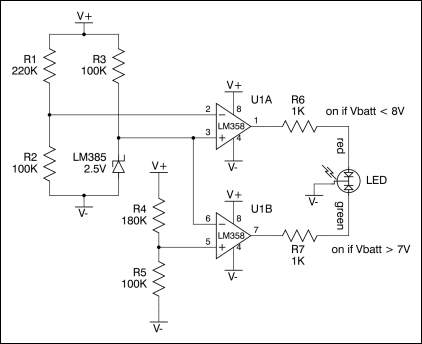tangent
Top Mall-Fi poster. The T in META42.
Formerly with Tangentsoft Parts Store
- Joined
- Sep 27, 2001
- Posts
- 5,970
- Likes
- 58

This is very similar to hadron's second circuit, but with one of the dividers in a different position to make the arithmetci easier, and using the band-gap reference instead of a zener. I built it, and it works beautifully.
Simply set the dividers equal to 2.5 divided by the desired trip point. My values are for 7 and 8V, so the dividers are set to 0.357 and 0.3125, respectively.
I'll be building your circuit next, aos.









